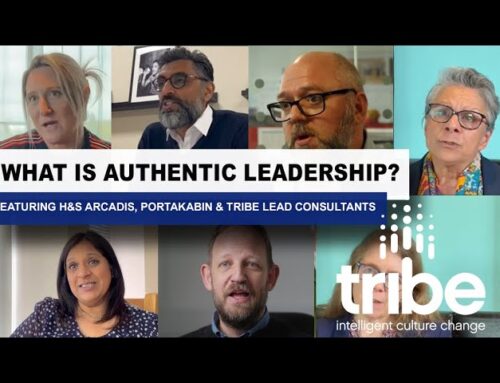When persistent problems plague your organisation, talking your way out of the rut might seem like the least productive fix. Yet involving people in the process of improvement through conversation is a powerful way to rediscover what’s most important to your organisation’s success.
David Jackson is HSE manager at Wastecycle, a leading resource management and recycling company in the UK East Midlands. In 2013, he and his team realised that the time was right to engage the attitudes, values and beliefs of their workforce through a programme of culture change and engagement. And so began a rapid succession of sustained improvements to production, quality and safety.
Here’s how they did it.
1. Rediscover what’s most important
“Everyone was too focussed on systems and profit and loss targets. That made us lose that contact with each other, safety and the values of the business within our separate departments. But we knew things could be better.”
The well-being of your workforce should be everything to you. Everything else comes second, including profit and loss. But to change attitudes you must first confront the obstacles eclipsing your real priorities.
One way to discover those obstacles is with a cultural survey. JOMC helped Wastecycle reveal an opportunity to improve communication between managers and front-line staff. Tony Hoy, a supervisor on Wastecycle’s production line explains what happened:
“Before it was an ‘us and them’ attitude. Now we get staff and directors – people who might never have met before – coming up with new ideas together just by talking to each other.”
2. Let people solve their own problems
When you trust your staff to devise solutions to their problems, then they’re more likely to overcome them. That’s because you’ve made them owners of a solution who are responsible for and invested in its success.
Here’s an example from Wastecycle. In the past, Tony repeatedly asked staff to tidy up after their shifts, so that walkways were clear and safe. This was frustrating for both him and his team so he invited them to solve the problem instead. They soon suggested that one team member patrols and clears their workplace throughout the day so debris never becomes a hazard.
While that solution might sound simple and obvious, the power lies in the fact that Tony’s team devised the solution themselves and want it to succeed.
“People’s defences drop when you get to know them and ask what they think. They spend nine hours a day doing their job so they know more about it than me.”
3. Drop old-fashioned management practices
When you believe in your staff and empower them to affect the future of their company, they’re more effective in their jobs (which is good for business too). But that means leaders have to let go of traditional management approaches. That means dropping authoritative commands without explanation, tacit expectations and retribution when things inevitably get misunderstood.
Tony recalls his eureka moment during Wastecycle’s cultural change training:
“We had to describe how our team members behave, then use that to pick what type of people they were on a chart. Mine were in the walking zombie category and I thought ‘hang on, I don’t want my staff to be zombies! I want them to have power in their jobs, I want them to be champions.’”
People are happier and more productive too when they’re given the support they need to make your workplace better. It requires an engagement-led culture, like the one at Wastecycle, where leaders encourage people to talk openly. Tony continues:
“Before it was a bit ‘crack the whip and get your head down’. Now it’s more like ‘how are things at home?’ At first people wondered what’s ‘wrong with Tony?’ … I’m still the same person, I’ve just changed how I come across to people – I give them time and get to know more about them.”
By changing the way you communicate with people you can get radically different reactions, and that helps to cure persistent problems. “It’s definitely a lot easier than cracking the whip” adds Tony.





